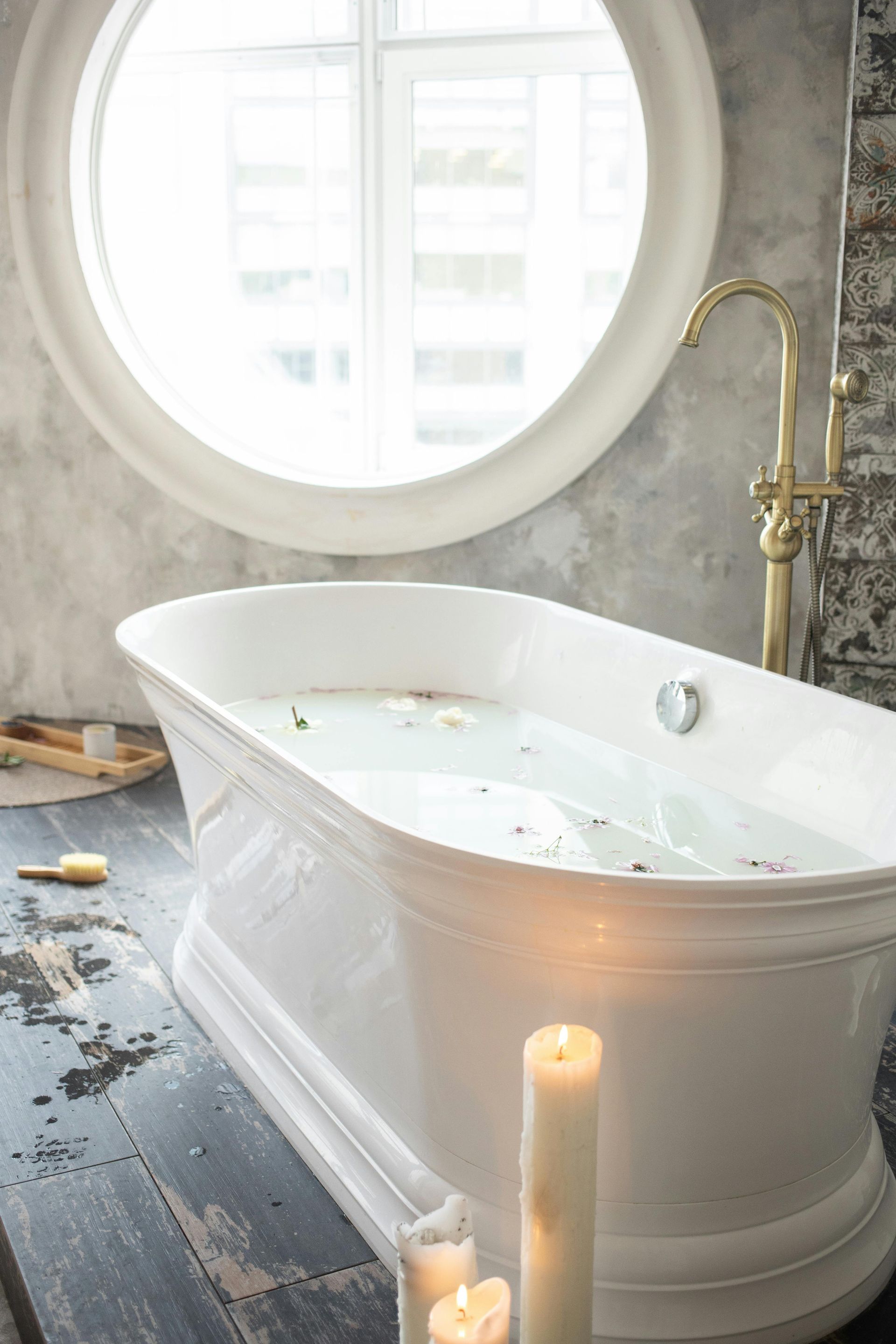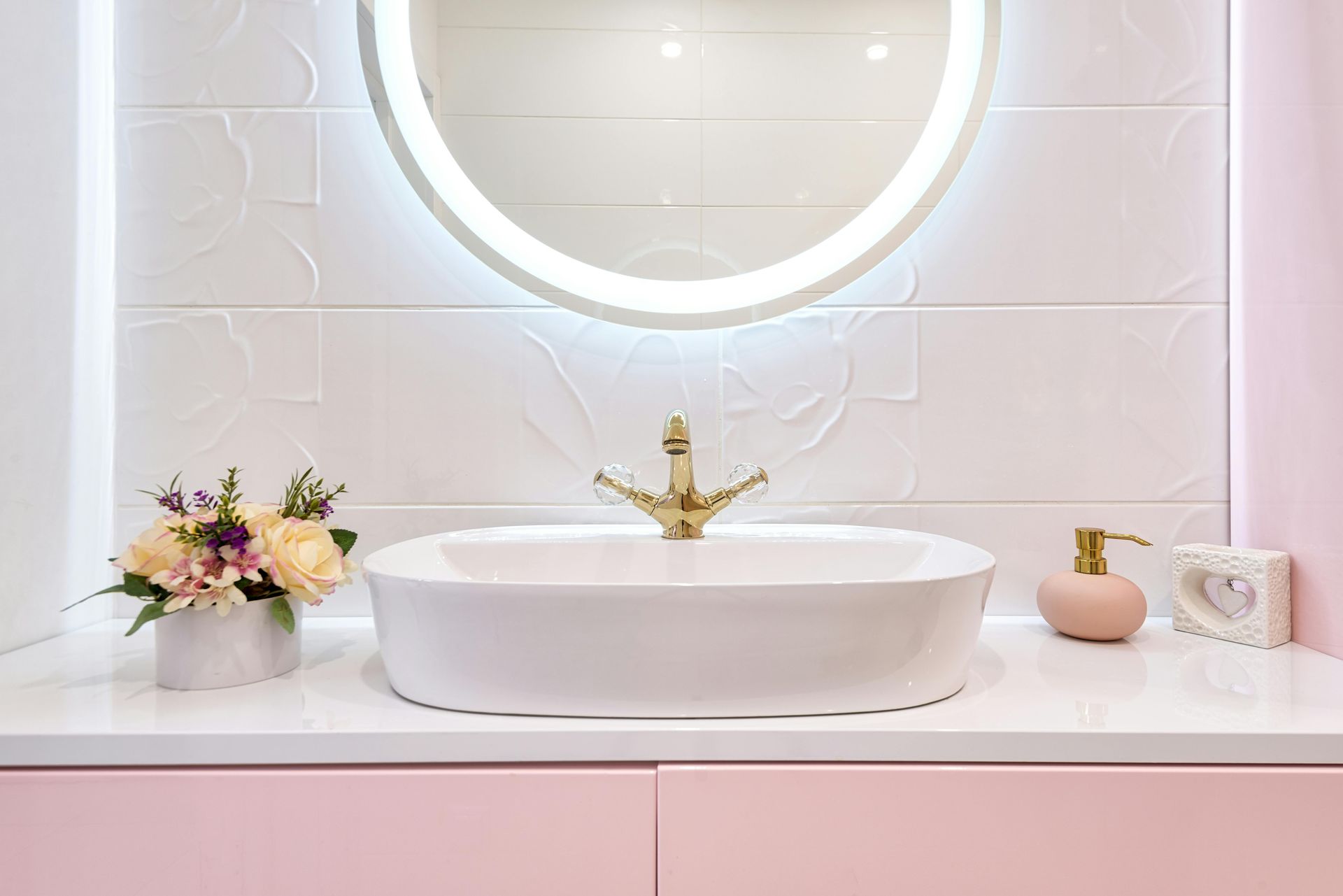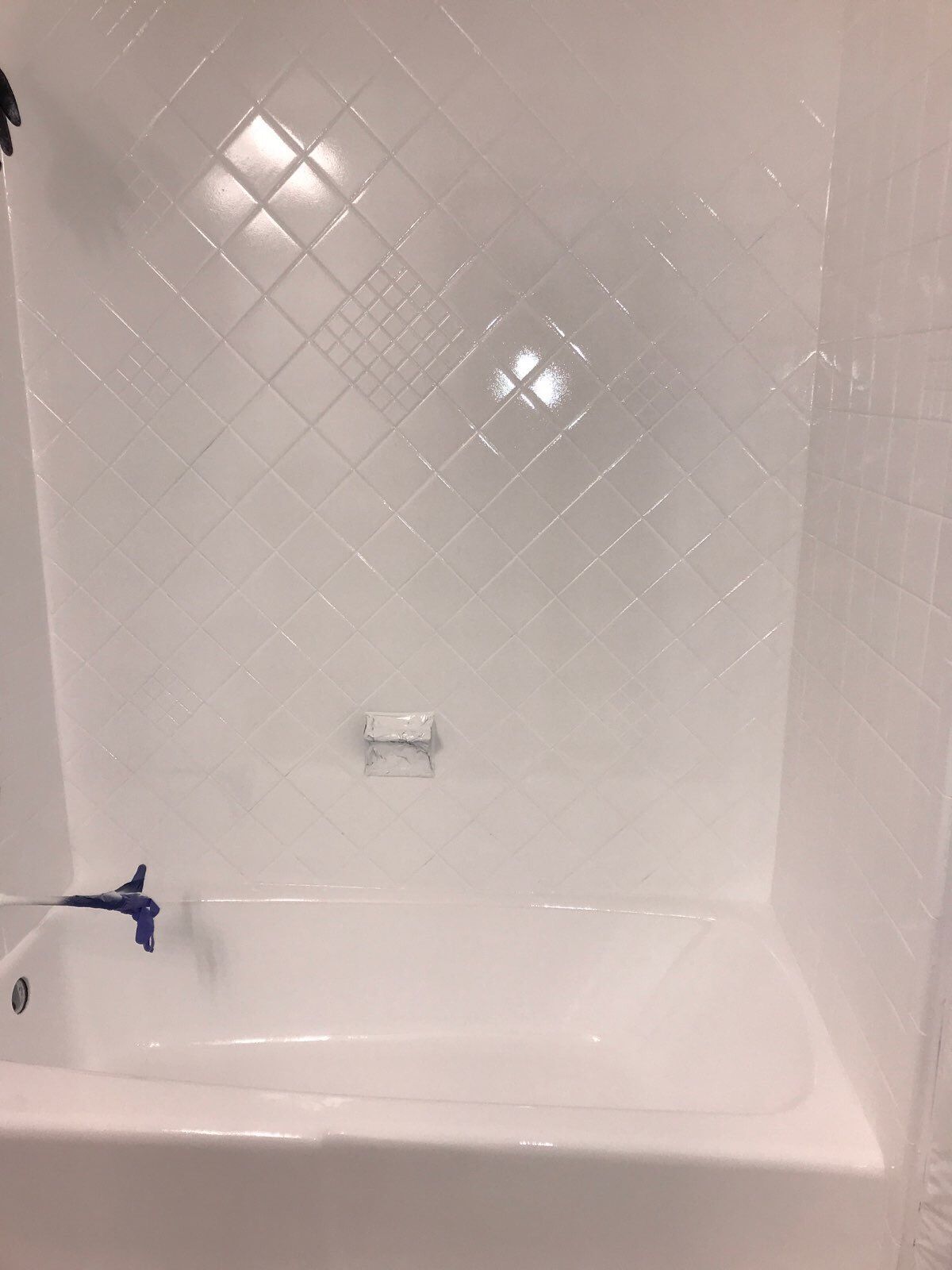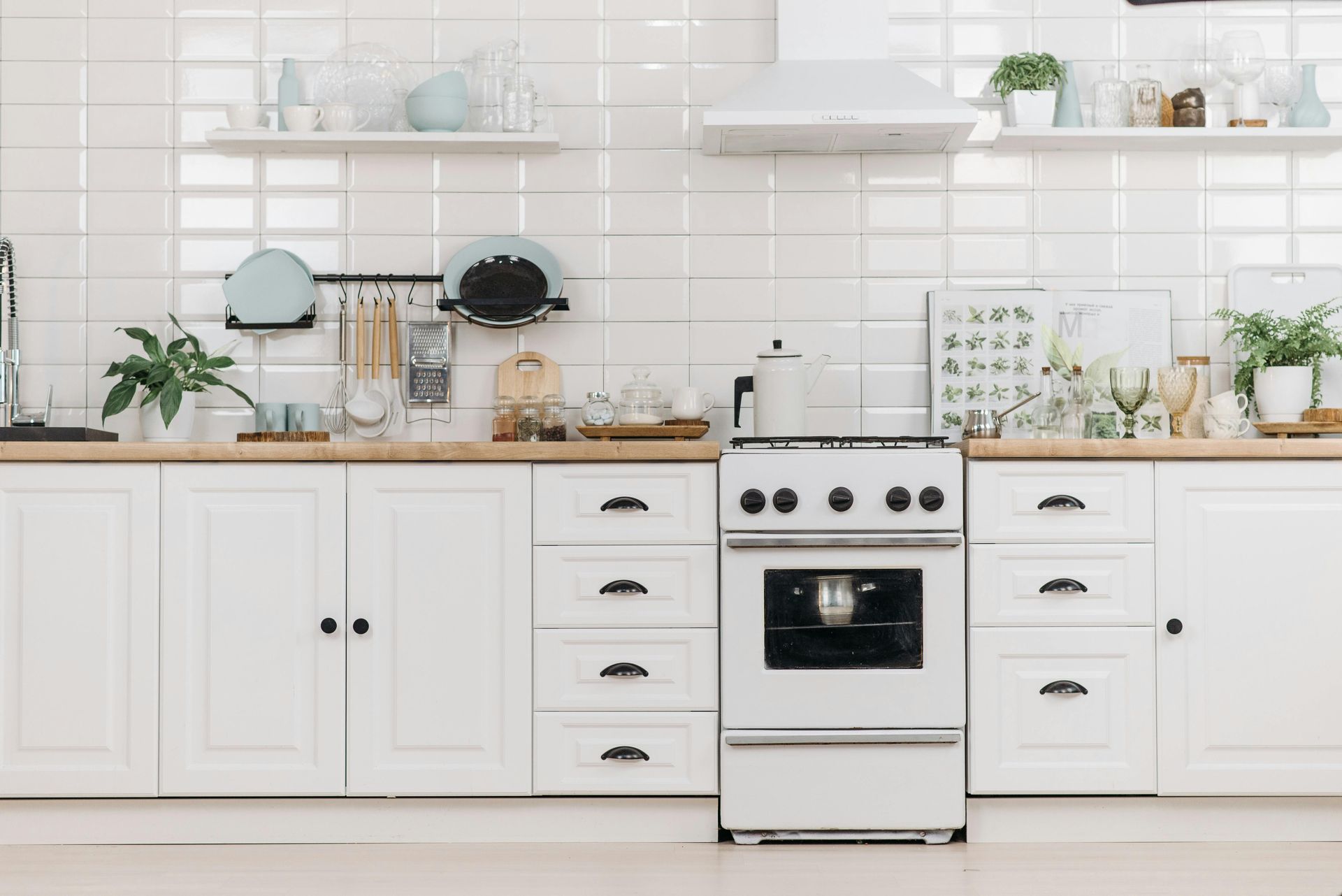How to Clean & Prepare Porcelain Tubs, Tile and Sinks Before Reglazing: Professional Refinisher’s Guide
If you own a bathroom refinishing business, you already know this: Surface preparation is the difference between a flawless reglazing job and a callback.
Whether you’re reglazing porcelain bathtubs, resurfacing ceramic tile walls, or recoating cast-iron sinks in residential or commercial spaces, thorough cleaning and prep ensures coatings bond securely and prevents common problems like fisheye and surface smoothness. It can also dramatically extend the life expectancy and durability of the fixture.
This professional guide explains step-by-step how to clean and prepare porcelain, ceramic, and cast-iron bathroom fixtures for reglazing, plus tips for avoiding coating defects specifically for professional bathroom refinishers.
Why Surface Preparation is Critical in Bathroom Refinishing
Porcelain tub preparation isn’t just about cleaning—it’s about engineering a surface that your
commercial bathtub coating system can grip. Skipping or rushing prep leads to:
- Adhesion failure
(peeling or flaking)
- Gloss inconsistency (matte spots, orange peel)
- Contamination defects (fisheye, bubbling)
- Adhesion problems on surrounding areas
Key goals of professional surface prep:
- Remove all
contaminants (oils, soap film, silicone)
- Create a
microscopic profile for mechanical adhesion
- Ensure
uniform surface energy for even coating laydown
- Eliminate micro-defects that cause pooling



Step-by-Step: How Professionals Prep Porcelain Bathtubs, Tile, and Sinks for Reglazing
1. Deep Cleaning & Degreasing
- Use an industrial refinishing cleaner to remove soap scum, mineral deposits, oils, and waxes.
- Focus on drain areas, corners, and grout lines where contamination hides.
- Rinse thoroughly and dry completely—moisture can cause adhesion loss.
2. Chemical Etching for Maximum Bond
For porcelain bathtub reglazing and ceramic tile refinishing, acid etching creates a microscopic anchor profile.
AdvanEtch is Zen-Tek’s low-fume, professional-grade acid etching solution. It’s engineered like a
sanding liquid to:
Pro tips for etching success:
- Apply evenly to avoid patchy adhesion
- Follow correct dwell time (see FAQ below)
- Always neutralize and rinse completely after use
3. Mechanical Abrasion (Optional but Recommended)
Even after acid etching, light sanding:
- Smooths surface imperfections
- Removes remaining gloss or stubborn buildup
4. Neutralization & Rinsing
After etching, neutralize the surface to:
- Remove acidic residue
- Prevent reaction with primer or topcoat
- Avoid streaking or bubbling during curing
5. Masking & Overspray Control
Professional masking:
- Protects surrounding tile, fixtures, and flooring
- Reduces overspray contamination
- Improves job speed and finish control
6. Bonding & Priming
Once the surface is etched, neutralized, and masked:
People Also Ask: Quick Answers for Pros
How do I prep porcelain for reglazing?
- Degrease, acid-etch, neutralize/rinse, dry, mask, then prime with a professional bonding system.
How do I prevent fisheye in bathtub coatings?
- Remove silicone and oils, clean after sanding, and avoid masking contamination.
Do I need both etching and sanding?
- For porcelain and ceramic, etching is primary; light sanding helps smooth and level surfaces.
How long after etching before primer?
- After neutralizing and rinsing, let the surface dry completely before applying primer.
What’s the safest way to etch in an apartment bathroom?
- Use low-fume etch, proper PPE, and set up exhaust ventilation to the outside.
Can I use acid etch on fiberglass or acrylic tubs?
- No—use mechanical abrasion only for fiberglass and acrylic surfaces.
How do I avoid runs and sagging on vertical tile?
- Spray with medium-wet passes, maintain correct gun distance, and follow flash times between coats.
Pro Tips to Avoid Coating Defects
- Running & Sagging: Apply thin, even coats and maintain consistent gun distance.
- Fisheye: Ensure complete decontamination, add fish eye eliminator additive
- Orange Peel: Adjust spray gun settings for proper atomization; avoid over-thick mixes.
- Overspray: Mask carefully and use proper ventilation direction.
Professional Refinisher FAQ: Acid Etching, Prep & Safety
How long should acid etching liquid stay on the surface before rinsing or neutralizing?
- Typically 5-10 minutes for porcelain or ceramic, depending on product directions. Over-etching can damage the glaze.
Do I need to sand after using acid etch, or does it replace mechanical abrasion entirely?
- Etching creates microscopic anchor points, but light sanding may still be used to smooth defects or blend chip repairs.
How do I properly neutralize or rinse the surface after using sanding liquid?
- Rinse with clean water, wiping with lint-free cloths until no residue remains.
How much should I apply and with what tool—brush, sponge, spray bottle?
- For AdvanEtch, use an acid-resistant paint roller or applicator for controlled, even coverage.
Can I use sanding liquid on fiberglass or acrylic surfaces, or only porcelain and ceramic?
- Use only on porcelain and ceramic—fiberglass and acrylic require mechanical sanding instead.
What PPE is required when handling acid etching liquid?
- Acid-resistant gloves, chemical splash goggles, long sleeves, and, optionally, a respirator rated for acid vapors if desired.
Is it safe to use indoors or in poorly ventilated areas like apartment bathrooms?
- Yes—with proper ventilation and PPE, and by exhausting fumes outside.
Can I legally use acid etching liquid in regulated environments like hospitals or schools?
- Yes, when compliant products like AdvanEtch are used with ventilation controls and local regulations are followed.
Is sanding liquid really better than scuff sanding for adhesion?
- For porcelain and ceramic, yes—acid etching provides a deeper bond profile.
Can I skip etching if I use a strong bonding agent or primer?
- Not recommended—etching ensures the strongest adhesion possible.
What’s the best acid etch product on the market in terms of results and smell/fume levels?
- AdvanEtch delivers professional results with reduced fumes compared to many alternatives.
Can acid etching be used to fix adhesion problems on a previously refinished surface?
- No—remove old coatings first before re-etching.
How do I dispose of leftover etching liquid safely?
- Follow local hazardous waste rules—never pour into drains unless permitted.
Is acid etch needed if I’m only spraying the bottom of a tub?
- Yes, for uniform adhesion even in partial resurfacing.
What happens if I skip the rinse step after etching?
- Residual acid can cause coating lift, peeling, or uneven cure.
Can acid etching damage surrounding tile grout or plumbing fixtures?
- It’s always a good precaution to mask and protect all surrounding areas before applying traditional products. However, Advanetch Prepares grout for adhesion, rather than damage. As for fixtures, while Advanetch can damage fixtures if left on for an extended period of time, one of its biggest advantages over legacy etching products is that Advantech does not instantly ruin materials but rather gives you enough time to wipe clean the excess material before damage begins.


